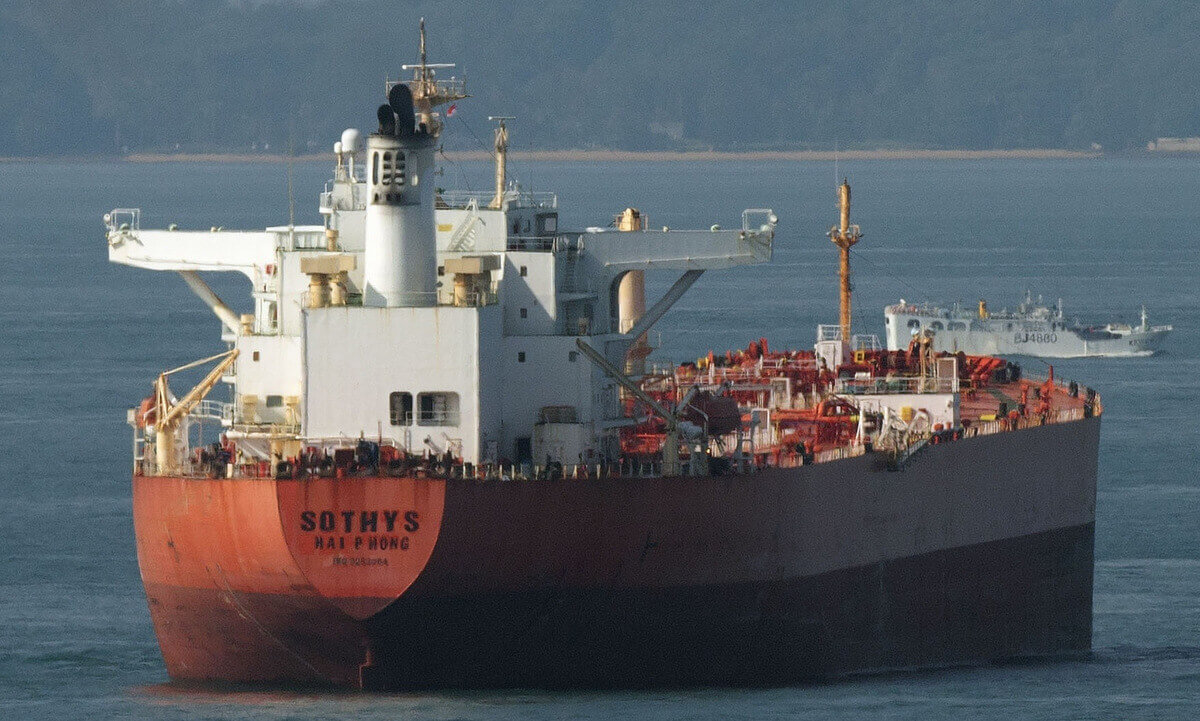Iran on Wednesday freed MV Sothys, a Vietnamese oil tanker that it seized at gunpoint in the Gulf of Oman on October 24, bringing an end to the latest maritime conflict involving Tehran.
According to data retrieved by The Associated Press (AP) from MarineTraffic.com, the tanker left a position off Iran’s Bandar Abbas port and had reached international waters in the nearby Gulf of Oman early Wednesday.
While the vessel appears to be anchored there, no information is currently available about the vessel’s crew. On October 27, the tanker’s captain had confirmed to the Vietnamese embassy in Tehran that all 26 crew members “were in good health and being treated well.”
Shahrokh Nazemi, a spokesperson for Iran’s mission to the United Nations, told the AP on Wednesday that “Sothys left Iranian waters last night after transferring the oil.”
Vietnamese officials have not commented on the development yet, though its officials earlier acknowledged contacting Tehran in an attempt to obtain more information about the seizure. The Vietnamese foreign ministry told reporters last week that it would “work closely with Iranian competent authorities to resolve this issue.”
Iran’s paramilitary Revolutionary Guard (IRGC) troops took control of the MV Sothys last month. Iran later celebrated the vessel’s capture through footage aired on its state television, a day before the 42nd anniversary of its seizure of the US Embassy in Tehran in 1949.
United States (US) forces had monitored the tanker seizure by Tehran but refrained from taking action. The US Navy’s Mideast-based 5th Fleet also did not immediately respond to the AP’s request for comment.
However, Iran and the US have given contrasting accounts of what happened to the MV Sothys. While the IRGC alleges that it thwarted an attempt by the US Navy to seize the vessel carrying its oil, US defence officials have rejected the account, saying that it was Iran who seized the tanker and took it into its waters.
Dorsa Jabbari, Al Jazeera’s Iran correspondent, explained that “The Iranians say that this happened because they believe that their oil was going to be seized by the Americans and now we understand that this is an operation that the Iranians carried out because they believed that they had to seize their oil before it was taken.”
The Sothys had been on the radar of United Against a Nuclear Iran, a New York-based advocacy group that monitors developments in Tehran. Analysts suspect that the vessel tried to transfer sanctioned Iranian crude oil to Asia.
In a letter dated October 11 addressed to the Vietnam Maritime Administration, the group said that its analysis of satellite photos showed that the Vietnamese vessel received a ship-to-ship transfer of oil in June from an oil tanker called the Oman Pride.
In August, the US Treasury identified the Oman Pride as being used to transport Iranian oil as part of a smuggling scheme. Without identifying a specific country, the Treasury alleged that the Iranian oil then ends up being sold into East Asia.
The episode was the latest provocation in Mideast waters as tensions between Tehran and Washington escalate over the former’s nuclear program.

